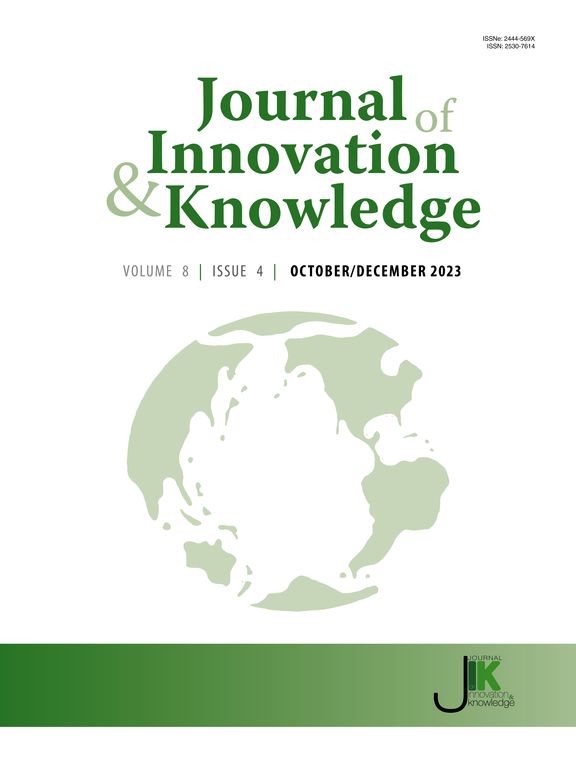Industrial pollution control based on artificial intelligence: A synergistic model using social network analysis and machine learning
IF 15.5
1区 管理学
Q1 BUSINESS
引用次数: 0
Abstract
This research examines the impact of articulated robots (ARs), the Environmental Policy Stringency Index (EPSI), and foreign direct investment (FDI) on industrial air pollution—measured by PM2.5 levels—across 12 developed countries from 1993 to 2023. Employing Social Network Analysis (SNA) for variable selection, Granger causality tests for temporal validation, and machine learning (ML) for predictive modeling, this work captures the complex, nonlinear dynamics of pollution outcomes. The results yield three key insights. First, the EPSI consistently mitigates PM2.5 emissions, lending support to the Porter Hypothesis, which posits that stringent environmental regulations can drive innovation while reducing pollution. Second, FDI demonstrates a consistent negative effect on PM2.5 emissions, primarily by facilitating the transfer of cleaner technologies and advanced management practices. This pollution-reducing impact is particularly evident in contexts with robust regulatory frameworks, indicating that foreign investment can support environmental improvement when aligned with effective institutional oversight. Third, AR (articulated robots) consistently exhibits a negative impact on PM2.5 emissions by enhancing operational precision, improving energy efficiency, and minimizing resource waste in industrial processes. The integration of robotic automation contributes to cleaner production practices, particularly when supported by clean energy adoption and effective environmental regulations. To enhance the accuracy of PM2.5 predictions, six ML models were tested: ARIMA, SARIMA, LightGBM, XGBoost, LSTM, and GRU. Among these, the integration of SNA with LSTM achieved the highest predictive accuracy, outperforming traditional models in capturing the complex, long-term dynamics of pollution. This synergistic approach not only underscores the pivotal roles of the EPSI, FDI, and AR in pollution mitigation and but also offers a practical framework for incorporating advanced technologies into industrial pollution control approaches.
基于人工智能的工业污染控制:一个使用社会网络分析和机器学习的协同模型
本研究考察了12个发达国家1993年至2023年间关节机器人(ARs)、环境政策严格指数(EPSI)和外国直接投资(FDI)对工业空气污染(以PM2.5水平衡量)的影响。采用社会网络分析(SNA)进行变量选择,格兰杰因果检验进行时间验证,机器学习(ML)进行预测建模,这项工作捕捉了污染结果的复杂非线性动态。结果产生了三个关键的见解。首先,EPSI持续减少PM2.5的排放,为波特假说提供了支持,该假说认为严格的环境法规可以在减少污染的同时推动创新。其次,FDI对PM2.5排放具有持续的负面影响,主要是通过促进更清洁技术和先进管理实践的转让。这种减少污染的影响在监管框架健全的情况下尤为明显,这表明,如果与有效的机构监督相结合,外国投资可以支持环境改善。第三,AR(铰接机器人)通过提高操作精度、提高能源效率和最大限度地减少工业过程中的资源浪费,始终对PM2.5排放产生负面影响。机器人自动化的整合有助于清洁生产实践,特别是在采用清洁能源和有效的环境法规的支持下。为了提高PM2.5预测的准确性,我们测试了6个ML模型:ARIMA、SARIMA、LightGBM、XGBoost、LSTM和GRU。其中,SNA与LSTM的集成获得了最高的预测精度,在捕获污染的复杂、长期动态方面优于传统模型。这一协同方法不仅强调了EPSI、外国直接投资和AR在减轻污染方面的关键作用,而且还为将先进技术纳入工业污染控制方法提供了一个实际框架。
本文章由计算机程序翻译,如有差异,请以英文原文为准。
求助全文
约1分钟内获得全文
求助全文
来源期刊

Journal of Innovation & Knowledge
Multiple-
CiteScore
16.10
自引率
12.70%
发文量
118
审稿时长
37 days
期刊介绍:
The Journal of Innovation and Knowledge (JIK) explores how innovation drives knowledge creation and vice versa, emphasizing that not all innovation leads to knowledge, but enduring innovation across diverse fields fosters theory and knowledge. JIK invites papers on innovations enhancing or generating knowledge, covering innovation processes, structures, outcomes, and behaviors at various levels. Articles in JIK examine knowledge-related changes promoting innovation for societal best practices.
JIK serves as a platform for high-quality studies undergoing double-blind peer review, ensuring global dissemination to scholars, practitioners, and policymakers who recognize innovation and knowledge as economic drivers. It publishes theoretical articles, empirical studies, case studies, reviews, and other content, addressing current trends and emerging topics in innovation and knowledge. The journal welcomes suggestions for special issues and encourages articles to showcase contextual differences and lessons for a broad audience.
In essence, JIK is an interdisciplinary journal dedicated to advancing theoretical and practical innovations and knowledge across multiple fields, including Economics, Business and Management, Engineering, Science, and Education.
 求助内容:
求助内容: 应助结果提醒方式:
应助结果提醒方式:


